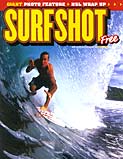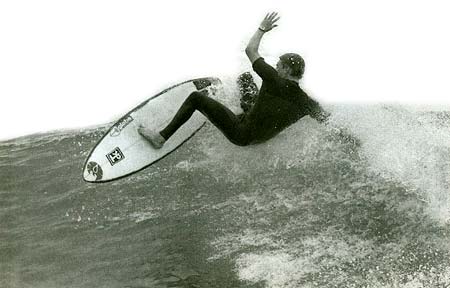SURFSHOT MAGAZINE, AUGUST 2004
There is not a sport that exists today where athletes have not improved their performance. Not only are surfers performing at a higher lever than ever before; they are achieving and maintaining their highest level of performance at the later part of their careers. Premier big wave rider Jeff Clark is in his 40s and is surfing the biggest waves of his life. Elite surfers are surfing longer and stronger because their conditioning programs keep them injury-free and at a high level of fitness. The same should hold true for the rest of the surfing populations as we age and want to maintain the ability to surf as long as possible.
Surfing is a total-body, highly skilled form of exercise. To achieve better skill in any sport you must perform it as often as possible. So the conventional wisdom that says "to get better at surfing you have to surf" is true. Yet a better conditioned athlete will have a quicker learning curve, be less likely to be injured by overuse injuries and be able to surf beyond middle age. It is also true that as we get older and responsibilities add up, we are no longer able to surf as often as we'd like. So instead of letting our bodies atrophy, we must take time to keep the body supple and strong via dry land workouts.
Flexibility is crucial for surfers. As we get older, the body will naturally tighten up. We can avoid this natural aging process by stretching, but it should be performed with proper technique and intensity. The latest research shows that we should use dynamic stretching before surfing or exercise, then slow static stretching afterwards. Yoga is excellent for many reasons and has become very popular within the surfing community. Once should keep in mind though that it is a shotgun approach to stretching. Think of your body as a bicycle wheel. A wheel should be true and balanced, if not it will fall apart. If you have tight spokes on a wheel you loosen them (stretch) and if you have loose spokes you tighten them (strengthen). You don't keep loosening loose spokes. Same is true with your body. You should assess your limb's range of motion and focus on stretching more on your tight areas and do more stabilization training on loose areas.
Strength workouts matter and should be part of every surfer's training. Strength training is not bodybuilding. Competitive body builders train with weights to develop muscular size and symmetry. Strength training on the other hand is a program of progressive resistance. Progression can be measured with the amount of weight lifted (load), number of reps, tempo and complexity of exercise. It is designed to enhance musculoskeletal, ligamental and tendon strength. Surfing is an explosive and dynamic sport, so it is important to add the element of speed to develop power. The use of weights is an excellent form of developing power as long as the training is kept functional. It should involve strengthening both the phasic (primary movement muscles) and tonic (deeper postural muscles) musculature. It should also be specific to the demands of surfing and be of the close chain variety so to enhance paddling, pop-up, surfing maneuvers. Plyometics (explosive movements) are excellent for conditioning the body to decelerate from a steep drop or coming down from a floater. Rotational movements such as ax chops with a weight or medicine ball while standing are excellent exercises for increasing powerful turns.
Cardio conditioning is essential for health and performance. Both anaerobic and aerobic training should be part of a complete program. Aerobic conditioning such as long distance running, swimming or biking are great preparations for long paddle outs at point breaks because they improve endurance. Anaerobic conditioning; sprinting as fast as you can for one minute, recovering and doing it again, is the type of training you want to do if you're planning a surf trip up north to Ocean Beach in San Francisco. Anaerobic training will allow you to go hard and recover quickly. You'll need it to get past the impact zone at OB.
Take a look at the beach and see how many former surfers you see that are overweight and out of condition and out of the water. Is this how you envision yourself in the future? Or would you rather see yourself as an athlete and surfing regardless of your age? Then create a well-rounded fitness program that will keep you in the water for a lifetime. Keep in mind that the father of our sport Duke Kahanamoku was an Olympic swimmer. The choice is yours.
In health and fitness,
Paul Frediani
www.surfflex.com
Photo: Kurt Jones



